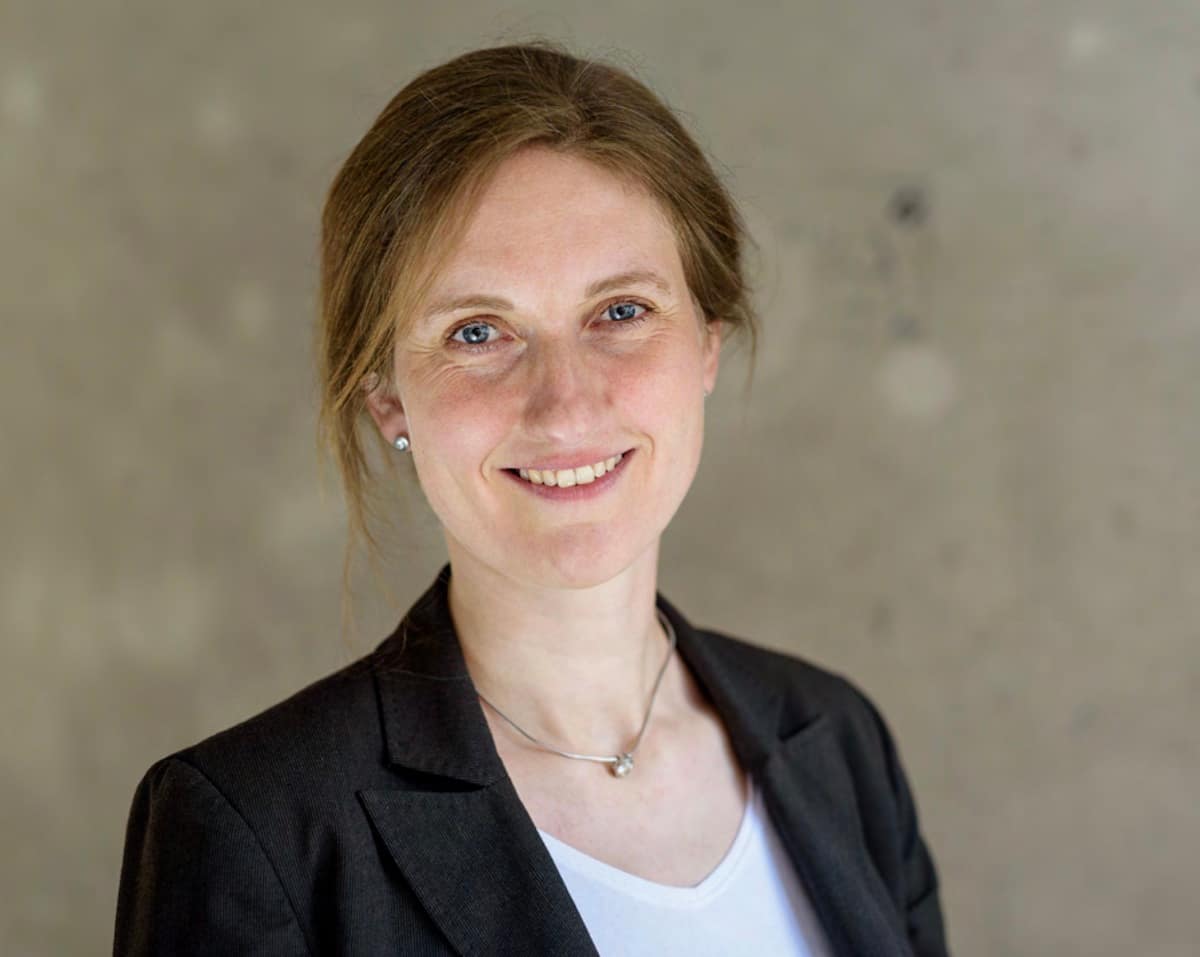
Becoming friends with your mind: An Interview with Marieke van Vugt about Mindfulness
Marieke van Vugt is assistant professor in the cognitive modeling group of the Department of Artificial Intelligence (Faculty of Science and Engineering) at the University of Groningen. One of the things she is interested in is studying the cognitive processes involved in mindfulness and meditation. Studying this topic is not an easy task since there is not even one common overall definition for mindfulness. The most commonly used definition of mindfulness comes from Jon Kabat-Zinn: paying attention in the present moment non-judgmentally.
How did you become interested in mindfulness?
Since I was little, I was interested in religion and what it means to be a good human being. When I was about 17, I came across a book called the Tibetan Book of Living and Dying, and it made so much sense to me. That book is not really about mindfulness but more generally about the Buddhist teachings and different meditation practices. The book gave very practical methods for how to cope with my own mind, my emotions and for becoming a more kind human being.
You became interested in mindfulness in a quite young age and you are still practicing it.
Would you say mindfulness made you a happier or more successful person?
I would definitely say that practicing meditation – not just mindfulness but all kinds of different contemplative practices – certainly makes me a happier person. It cultivates the skill to step outside your thoughts, instead of being totally wrapped up in emotions of anger, fear or anxiety. It makes you realize that such an emotion is just a thought, and this is quite a profound realization. This in itself will create a sense of humor like “Oh, it is just a thought. It is okay. I can actually decide to think something else”.
I don’t know if it made me more successful. Maybe sometimes yes and maybe also sometimes no. Sometimes I feel my experience with these practices create so much flexibility in my mind that I am not just interested in pursuing one thing. And pursuing one thing this is actually a recipe in science for being successful. On the other hand, it does help me to maintain a sense of humor when I face the inevitable failures and rejections that come with an academic career.
When did you start studying mindfulness more scientifically?
My interest in meditation and my interest in neuroscience were parallel roads in my life for the longest time. While I was in high school, I not only discovered meditation but also got interested in the brain. In college I continued practicing meditation. At the same time, I also studied neuroscience. In my gap year between college and grad school, I travelled to India and there I came across a book called Destructive Emotions by Daniel Goleman, which is about a dialog between scientists and the Dalai Lama. At that time (around 2002), meditation research was actually still a taboo field for neuroscientists. I had an interview at Oxford for a PhD position and I remembered mentioning quite excitedly that I planned to do meditation research. Maybe that was not the best idea (and I did not get the position). Also, my PhD advisor at the University of Pennsylvania was not very excited about me getting involved in meditation research. It was only when I received a Varela Award from the Mind & Life institute that I started to do my own experiments in this field in collaboration with other professors in the department.
What do you think made mindfulness a more accepted topic in science?
I think it is partly the work by Jon Kabat-Zinn. He created a very secular mindfulness training intervention, which is now used in many hospitals. This secularization got rid of some of the New Age stigma that used to be associated with meditation. He also coined the term mindfulness, which gave meditation a more scientific and rigorous connotation. Then, there was a seminal study from Richard Davidson and Jon Kabat-Zinn in 2003. They used mindfulness in a context of a biotech company and found that it influenced antibodies to a flu virus. I think that was the first evidence that mindfulness can actually influence your biology.
Another factor through which mindfulness became more accepted might be the increase in speediness in our society. This speediness has created in people a hunger to slow down, and mindfulness is one way to do that.
Since there is still not a clear definition about mindfulness – how is it possible to measure such a vague concept?
Yes, measuring it is quite a challenge. I think it is important to really develop rigorous models of what the practice is. So far, people have looked at the effects of the practice on variables such as blood pressure, heart rates, stress ratings, but those are quite indirect. So far, I haven’t seen fantastic results from those kinds of studies. This is funny because when I see people that seriously practice mindfulness, you can see changes in their way of being that are very noticeable, and we don’t know how to measure it. In my lab we have been thinking about better measurements. For example, to try to get at the ability of being able to see your thoughts as just thoughts and not get so distracted with self-related worries, we have created a task in which we distract people by making them think about themselves. We find that when people think about themselves, they can remember fewer words in a complex working memory task. Another interesting dependent variable is mind-wandering, because in mindfulness practices you basically observe your own mind-wandering. I don’t necessarily think that mindfulness will reduce the amount of mind-wandering, but it might change your attitude towards your own thoughts.
You also did some research about the brain waves of Tibetan monks. Can you tell us more about that?
I am currently conducting a research project studying the effect of so-called “analytical meditation”, in which Tibetan monks contemplate philosophical texts and debate these in a very physical way. We want to find out more about what the monks are doing, and how that affects their emotions and cognition. What makes the project extra special is that we want to use our project to teach monks to become scientists themselves. To take a first stab at trying to understand what the monks were doing, we looked at the debating monks’ brain activity in an EEG hyperscanning setup, which means EEG is recorded from two monks at the same time. Preliminary results indicated that their brain waves were more synchronized when they agreed on something, than when they were disagreeing.
There are more and more mindfulness courses and you get the feeling that it can increase life satisfaction for everyone. What do you think about that? Are there also people for which mindfulness can have negative effects?
Definitely not. Research in the adverse effects of mindfulness is only getting started now, and I am not an expert on this. Nevertheless, I have heard that for people with traumas it can be problematic because if they sit down and observe their mind, these traumas resurface, and people may not have the resources to deal with those. Another risk factor is when people monomanically focus on meditation practices for many hours a day and neglect their health and exercise habits (see also a recent study by Lindahl et al, 2017). In that case, the support of a teacher and a community to stabilize such a person is important.
What do you think about implementing mindfulness in schools?
Tricky topic. On one hand, can be beneficial for kids to get some tools to manage their emotions. But mindfulness is not necessarily helpful for everyone, as I mentioned earlier. It is also important that kids are not forced to do it, and finally that it is taught by teachers who are both skilled at mindfulness and at working with kids.
What are the biggest misunderstandings about mindfulness?
One big misunderstanding about mindfulness is that it is a tool to become super-hyper-concentrated and a quick fix for success. Actually, the practice is intended at undermining the obsession with success, and to develop a kind attitude towards oneself and others. Another misunderstanding is that the goal of meditation is to get a completely blank mind. In fact, it is much more about becoming friends with your own mind.
What is the biggest challenge for people to implement mindfulness in their daily lives?
I think it is very much the distraction by everything around us. There are no cues for turning our attention inwards. There is so much busyness that you tend to forget that you can actually take a moment to just turn your mind inwards and just look at your emotions. Even just taking a break is quite a radical act – especially for really ambitious people, like a lot of us (myself included!).
What is interesting about my work with the Tibetan monks is that their society is actually very different. Their environment encourages turning your attention inwards and cultivating kindness. For example, if you go into a school, you see many slogans like “others before self” and “come to learn, go to serve”. Instead of stressing themselves with trying to become successful, their ambition is to become a kind person and to cultivate humility.
How do you see the future for mindfulness?
I think we are going to see more research about when mindfulness is helpful, and when it is not. We also need to work on developing more detailed models of what is actually practiced in different meditative practices, and what the complete spectrum is of these practices, ranging from mindfulness to compassion cultivation to analytical meditation. I also hope that we will develop a more balanced perspective on what mindfulness can do – that we will move beyond the hype (watch out for an article I co-wrote on this topic that will come out soon!).
And in the end I hope that a more balanced integration of mindfulness in society can increase the level of compassion and kindness, which would be very helpful – especially in academia.
References
“Mind The Hype: A Critical Evaluation and Prescriptive Agenda for Scientific Research on Mindfulness and Meditation”. Van Dam, N., van Vugt, M. K., Vago, D., Schmalzl, L., Saron, C., Olendzki, A., Meissner, T., Lazar, S., Kerr, C., Gorchov, J., Fox, K., Field, B. , Britton, W., Brefczynski-Lewis, J., & Meyer, D. (in press). Perspectives on Psychological Science.
This interview, which first appeared in the BCN Newsletter 107, was conducted and by Justine Dickhoff. Cover photo by Sander Martens



